While visiting these houses in Vigan, particularly the venerable Quema and Syquia houses, what I found most remarkable, after my legs recovered from all those very steep staircases, was that I was finally seeing, face-to-face, some of the most unique and most original furniture in the Philippines, particularly the aparadors (wardrobe cabinets). My family and I being “aparador enthusiasts” (would that be comparable to “tennis hooligans”?), I always look out for the opportunity to see yet another unusual and beautifully-designed antique Filipino clothes cabinet whenever I do an akyat-bahay visit.
There are many ways of classifying aparadors. For me, a logical classification is to just think of two groups – those with mirrors, and those without. This conveniently parallels, more or less, the ages of the aparadors – i.e., older, 19th century aparadors would most likely not have mirrors, since glass was imported and therefore very expensive. When glassmaking was introduced into the country (or imports simply became more abundant and less expensive – I don’t know which), mirrors became more commonplace, so 20th century aparadors tended to have mirrors, almost as a matter of course.
There are many ways of classifying aparadors. For me, a logical classification is to just think of two groups – those with mirrors, and those without. This conveniently parallels, more or less, the ages of the aparadors – i.e., older, 19th century aparadors would most likely not have mirrors, since glass was imported and therefore very expensive. When glassmaking was introduced into the country (or imports simply became more abundant and less expensive – I don’t know which), mirrors became more commonplace, so 20th century aparadors tended to have mirrors, almost as a matter of course.
We saw this book-referenced standard-bearer of the first group in the Quema House, a neoclassical two-door kamagong aparador with light-colored lanete wood-inlaid designs, which has been conventionally dated to the first half of the 19th century or even earlier.
However, this piece is not really unique, as small kamagong (or other dark Philippine hardwood) aparadors of this type are to be found in many furniture collectors’ homes and antique dealers’ showrooms. Here’s one:
This next one makes good use of contrasting woods – narra for the panels and kamagong for the frames.
This one might have received its decorative wood-and-bone inlay more recently, but it has basically the same size and dimensions as the others in this class:
Another kind of “tambol” aparador (that’s the “street” name for un-mirrored and unglazed [i.e., "glass-less"] aparadors) is exemplified by this tall neo-Gothic beauty that we espied at the Syquia House:
Original Gothic-style aparadors are sought-after today, no doubt reflecting the esteem that homeowners of the 19th century also had for them. Here is one with a relatively flamboyant crown:
This one we can probably call “ecclesiastical Gothic”:
Here’s a modest-looking one in contrasting woods for the panels and for the frames and carvings:
And this one in light narra uses kamagong as a contrasting wood for the carvings and the thin pillars in front.
This next Gothic-style example is all in narra, but still makes for a fine specimen.
This last one is a recently-made reproduction in kamagong and narra, but could you tell just from this photo?
But Gothic was not the only non-mirrored style in the 19th century. Here is an aesthetically pleasing example that does not subscribe to any distinct style:
And here’s one that makes up for the plain-ness of its doors by incorporating everything including moon and stars in its crown:
And here’s one that makes up for the plain-ness of its doors by incorporating everything including moon and stars in its crown:
Towards the end of the 19th century, mirrors started showing up on aparadors. The exuberance of Filipino Neo-Classical, Baroque, Victorian and Art Nouveau design was only sharpened by the availability of “looking glass.”
This wide single-door with a tall headpiece is actually one of a pair.
Which reminds us of the matched pair that we saw recently in the Syquia House:
This two-door example seems to have gotten her coiffure made up for the occasion, and even has a small pentagon-shaped mirror up on top:
Which reminds us of the matched pair that we saw recently in the Syquia House:
This two-door example seems to have gotten her coiffure made up for the occasion, and even has a small pentagon-shaped mirror up on top:
This one has lost its original left-panel mirror and small round mirror on top, but even then still intimidates.
This one, also from the Syquia House, willingly competes in the “tall crown” competition.
And this oversized single-door, from the 1880’s, has lost some carving detail on top, but still dominates any bedroom it happens to be in.
When mirrors became available, the more creative Filipino cabinet makers did not think to be confined to the usual rectangular shapes. Here is a most-impressive “pear”-shaped mirror on an oversized single-door aparador.
Note that it also has a smaller mirror up on top in the crown – and it’s pear-shaped too!
This next one is clearly early Art Nouveau, in the style of those late 19th century structures and interiors in and around
Here’s another Art Nouveau one, with all shapes and sizes of mirrors competing to stay in frame:
Modestly arched mirrors nicely complement the broken pediment on this original example:
Here’s another one with arched mirrors, but with an “undulating” crown:
The arched mirrors on this next one are clearly an inseparable pair, but the antiquity and elaborateness of the carvings and the overall design is what gets the viewer:
The next one features one arched mirror, but three doors!
This last one is a recently-made aparador that is inspired by similar 19th century original specimens, but goes for the three-door idea on a smaller scale (as the originals were huge and could accommodate not just the family wardrobe but the family members as well).
Even more conventional rectangular-shaped mirrors still managed to complement extroverted late 19th century designs. Here’s a vaguely neo-classical design, which now has clear glass in place of the original mirrors:
Another tasteful neo-classical two-door with simple rectangular mirrors is next:
Another tasteful neo-classical two-door with simple rectangular mirrors is next:
This one managed to incorporate the owner’s monogram of sorts into the Art Nouveau crown:
And this one sneaks in a small oval mirror in the crown above the larger rectangular one on the door.
This conservative one goes for a balustraded crown, now needing some repairs:
Even without its rectangular mirrored door, this over-wide and over-tall late 19th century specimen is not to be messed with:
And finally, here’s my personal favourite – an extremely unusual all-balayong (harder, redder, and rarer than narra) remnant of the 19th century, with Aladdin / Lord of the Rings / Harry Potter / (insert name of other SF&F series for children here) – style carvings on the crown.
eventlinen wrote on Aug 17
Lavish gilded antique furnitures. I have a great interest in antique furniture and was searching for any such blog. Thanks for sharing.
Vogue living |
rally65 wrote on Aug 17
Check out more photos here: http://www.flickr.com/photos/28098727@N00/collections/72157624933258063/
|
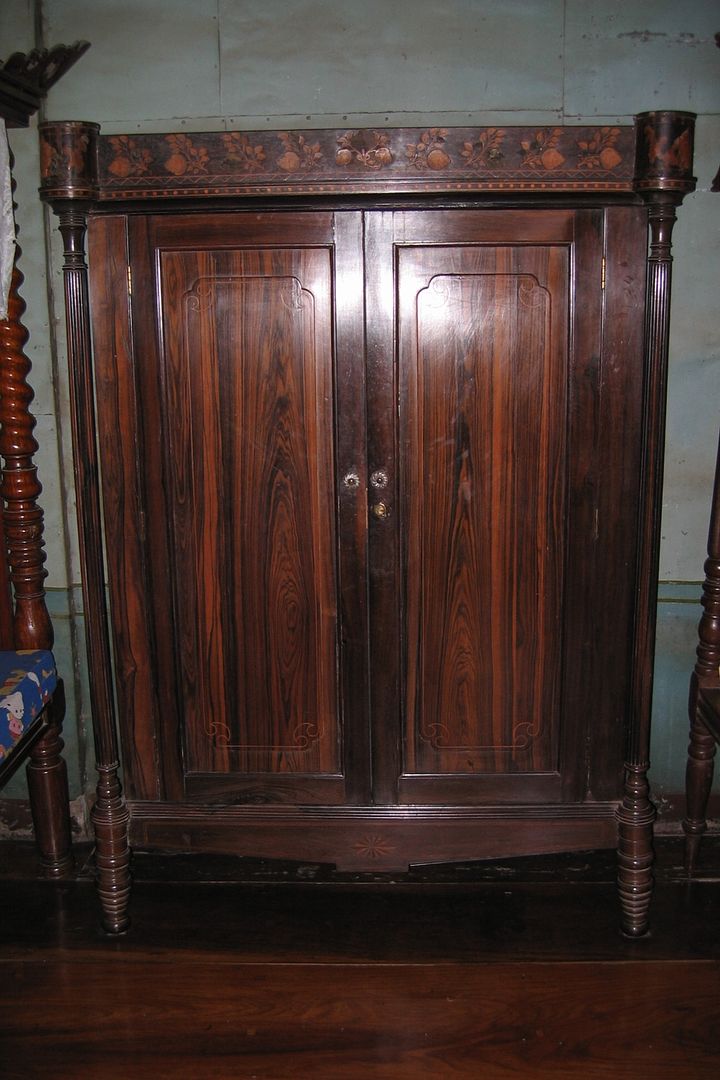
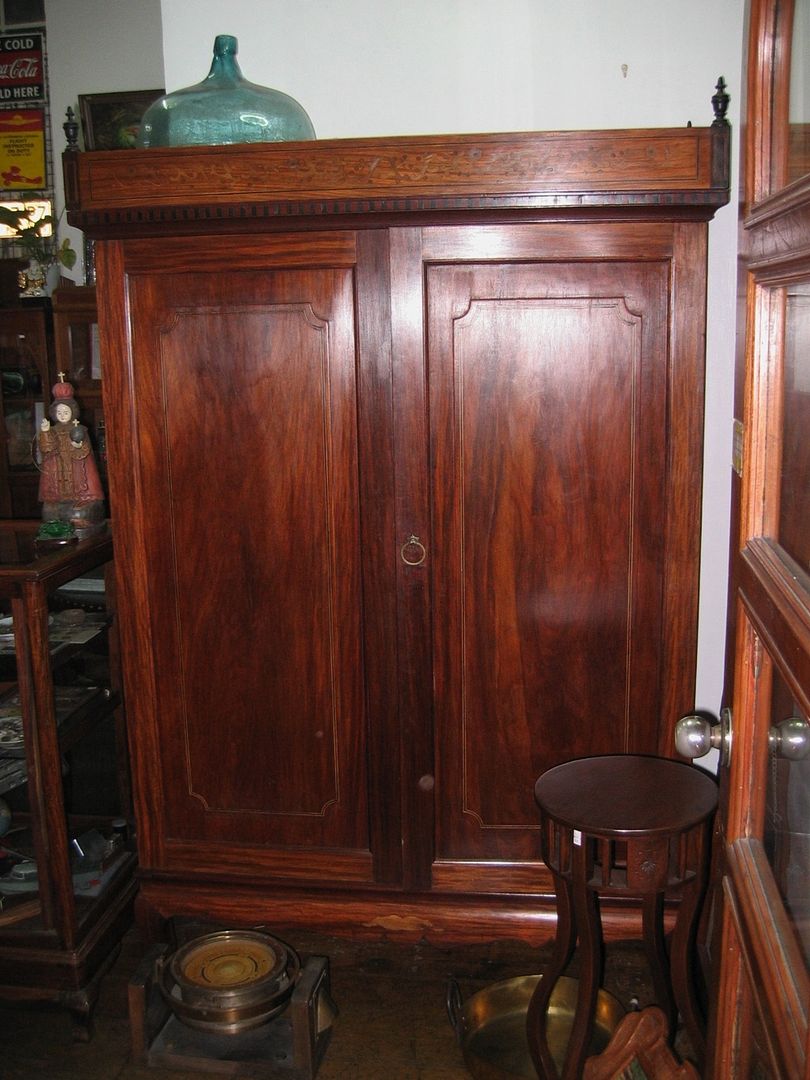
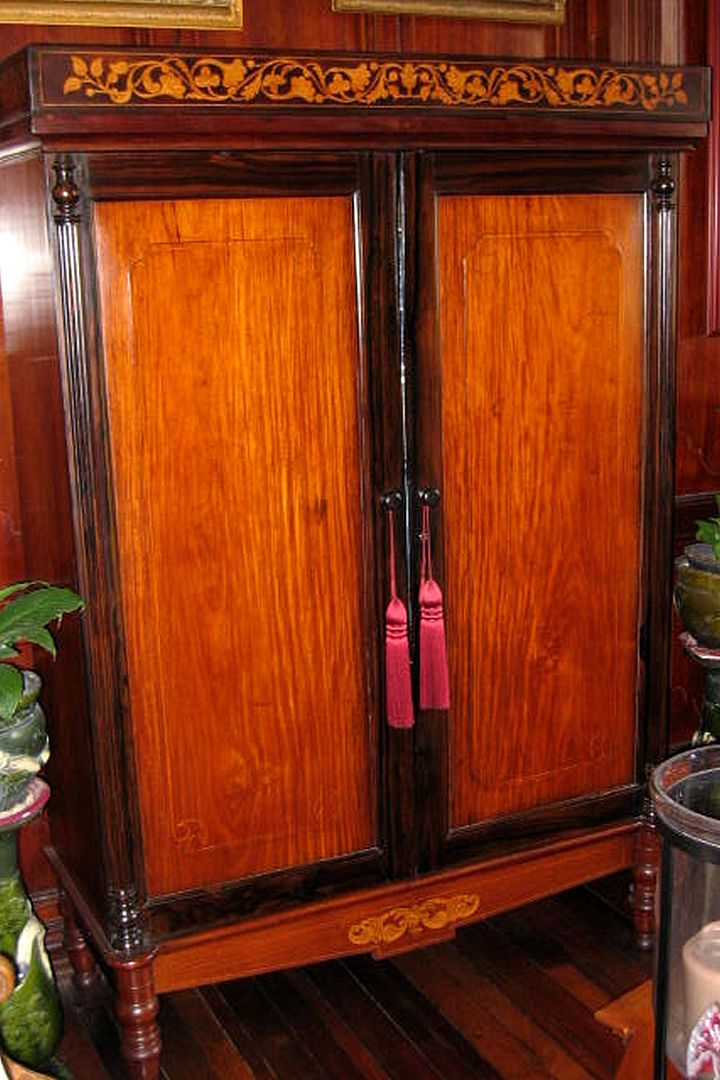
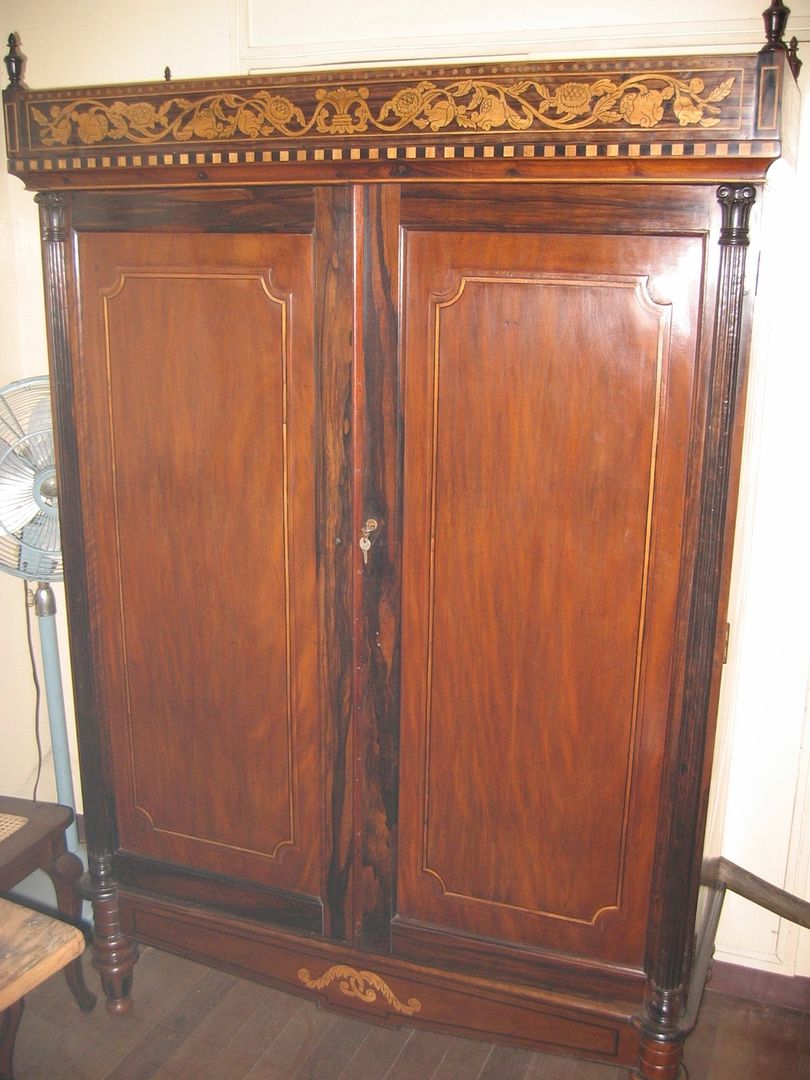

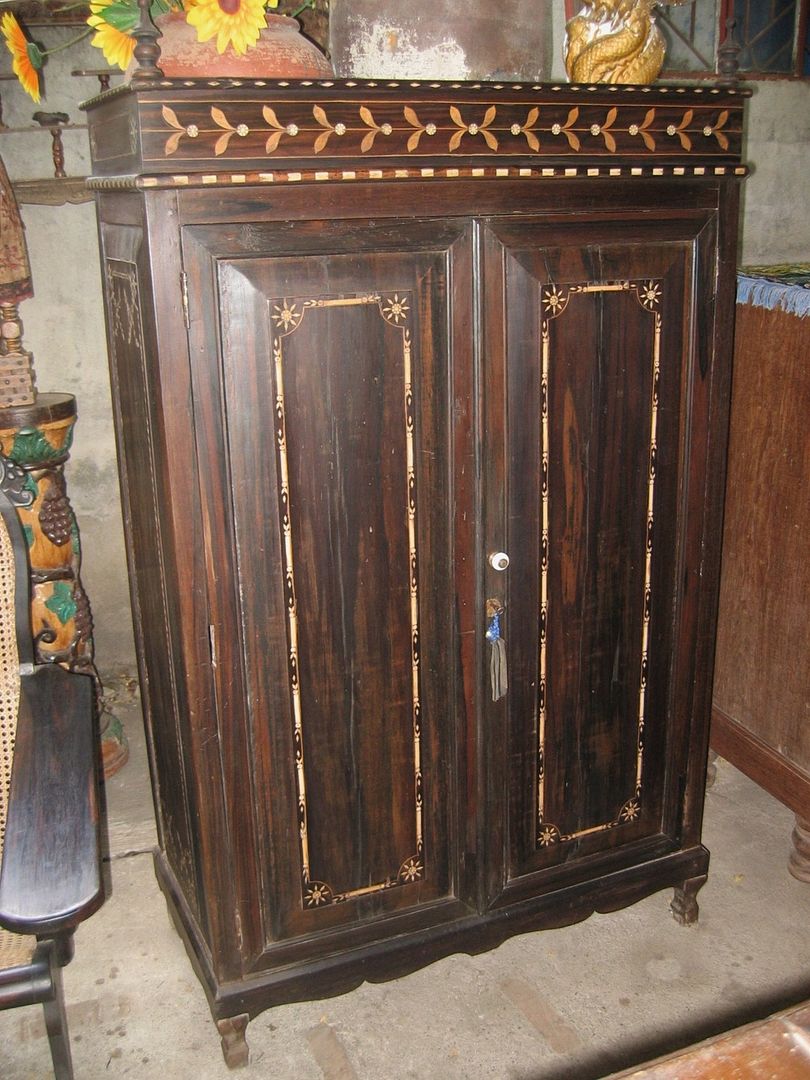

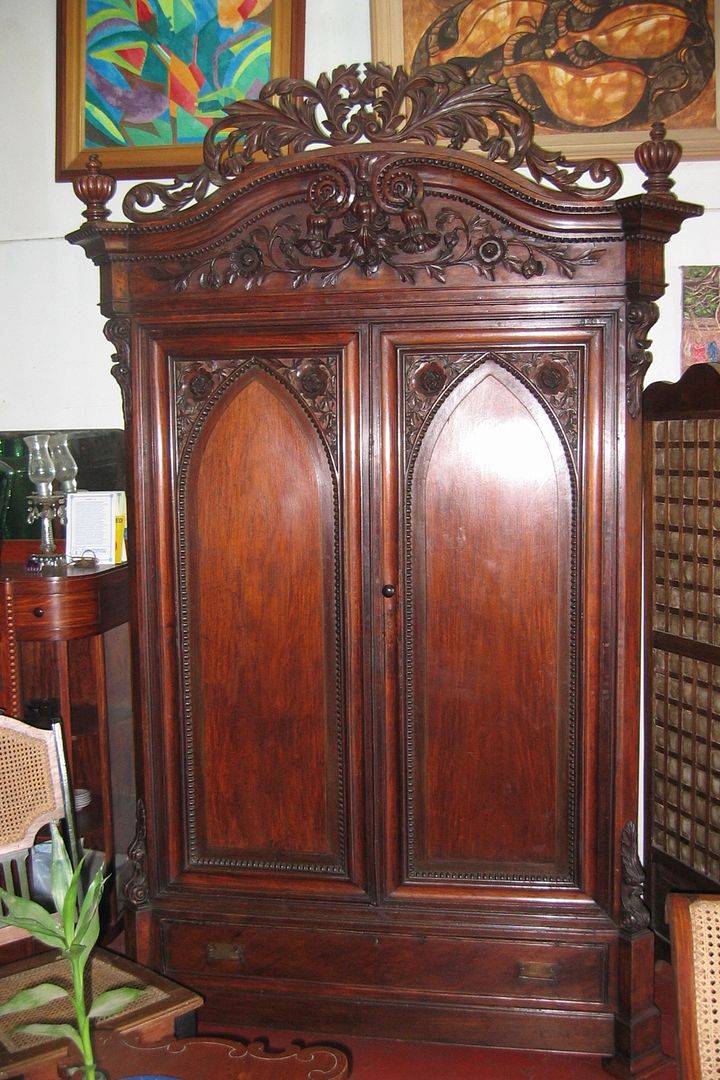
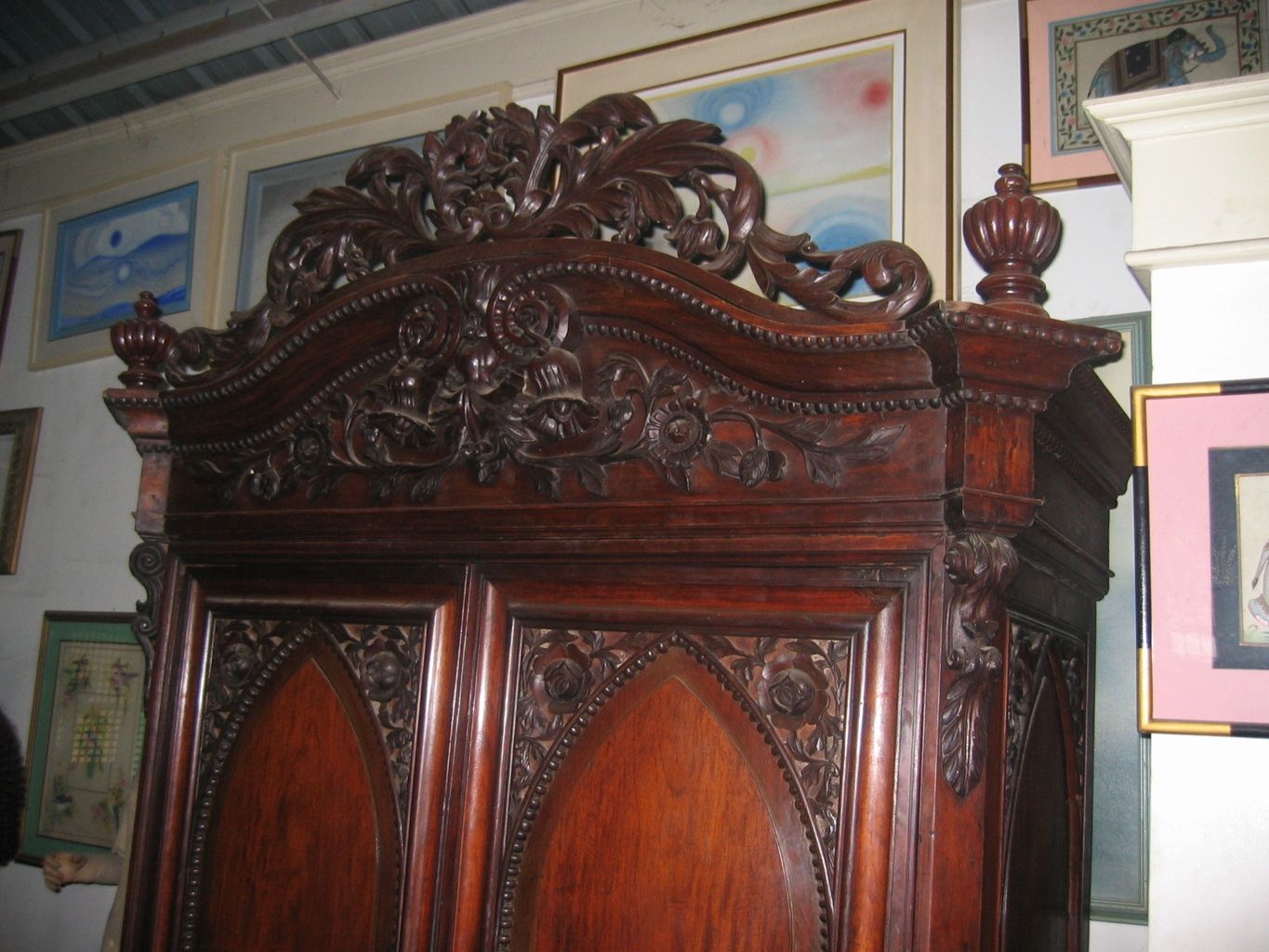
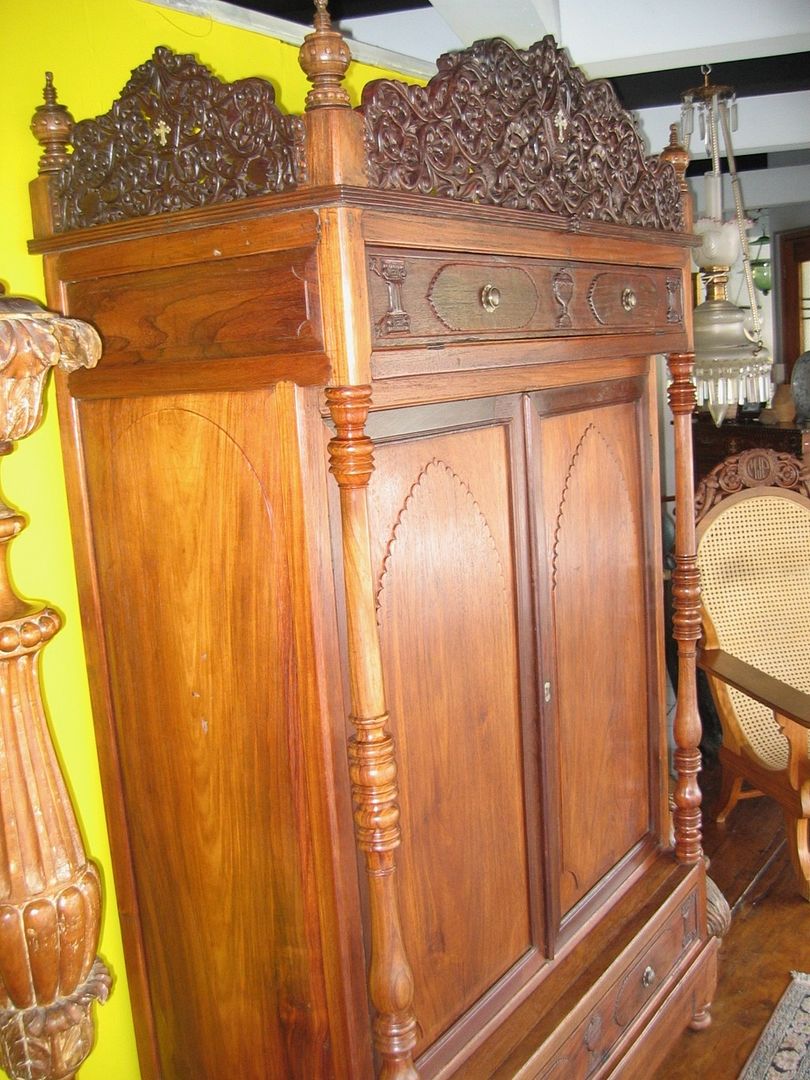
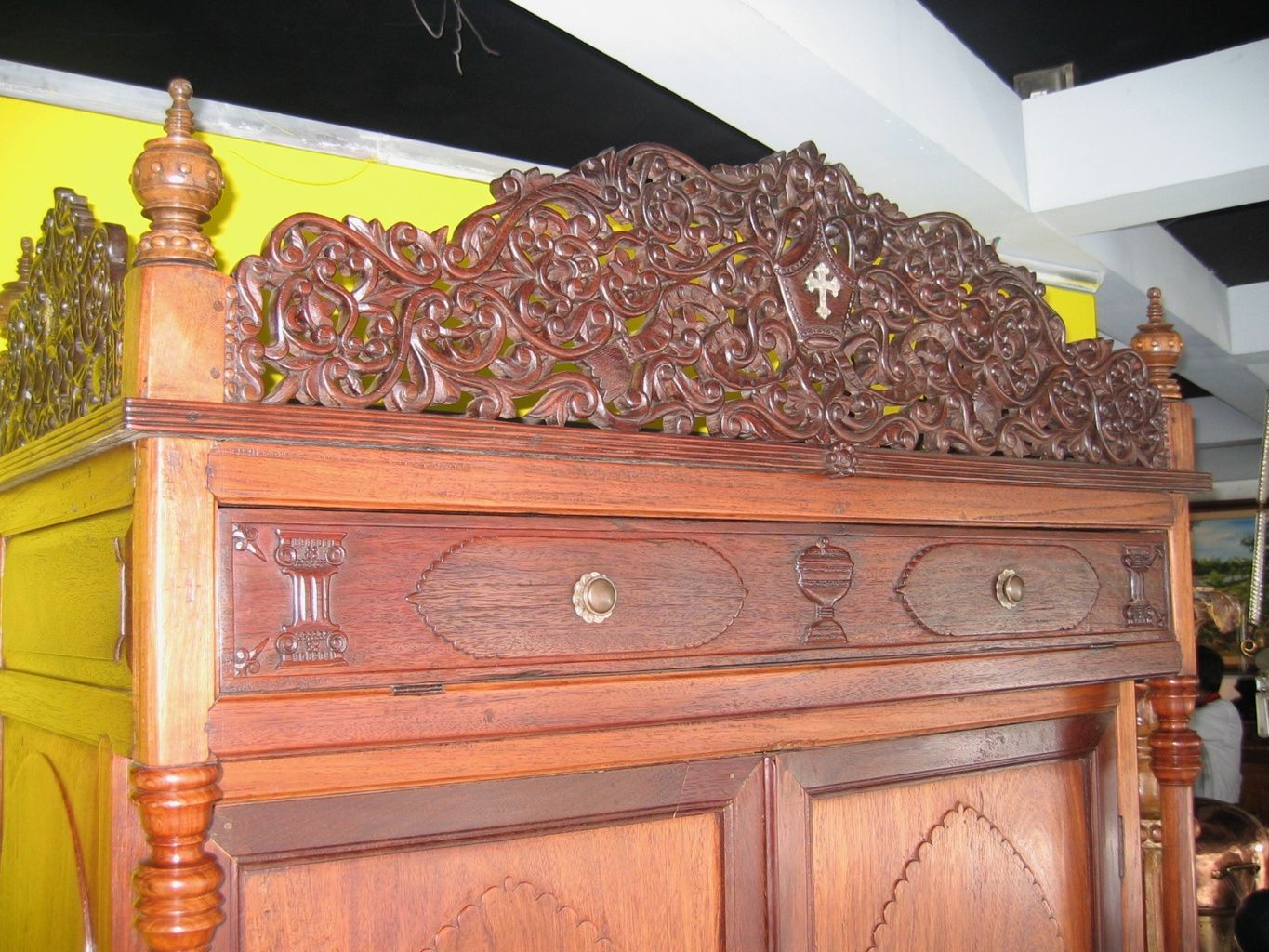
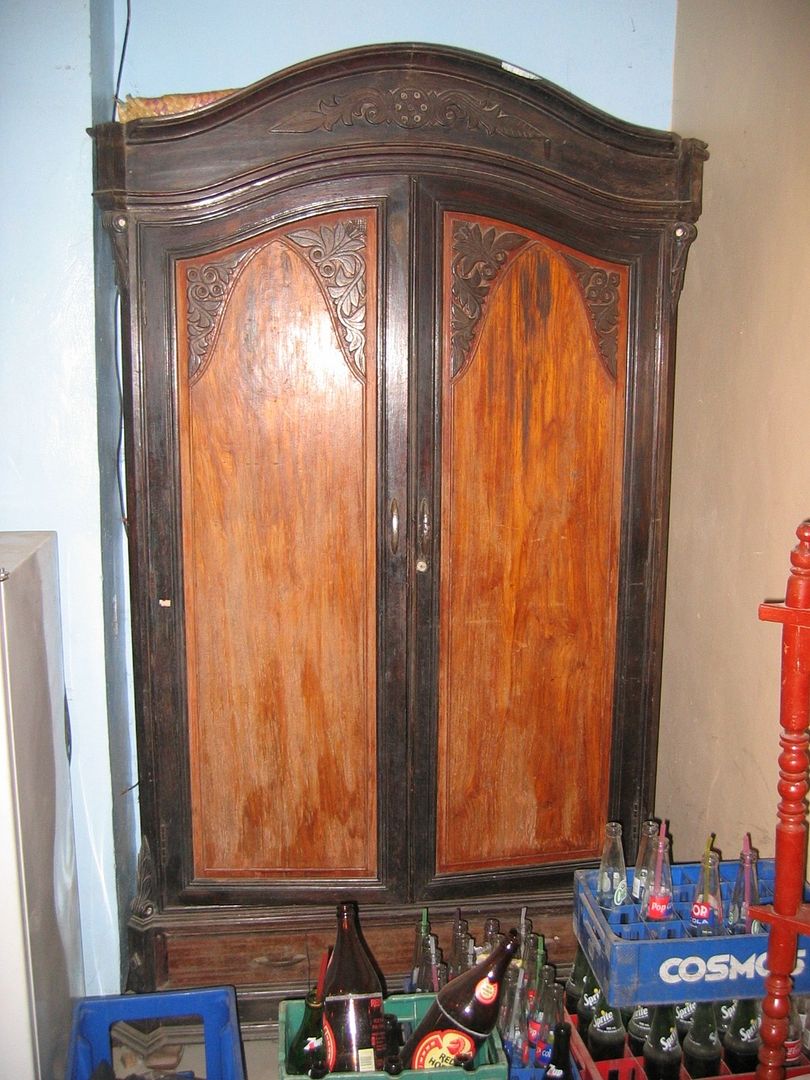
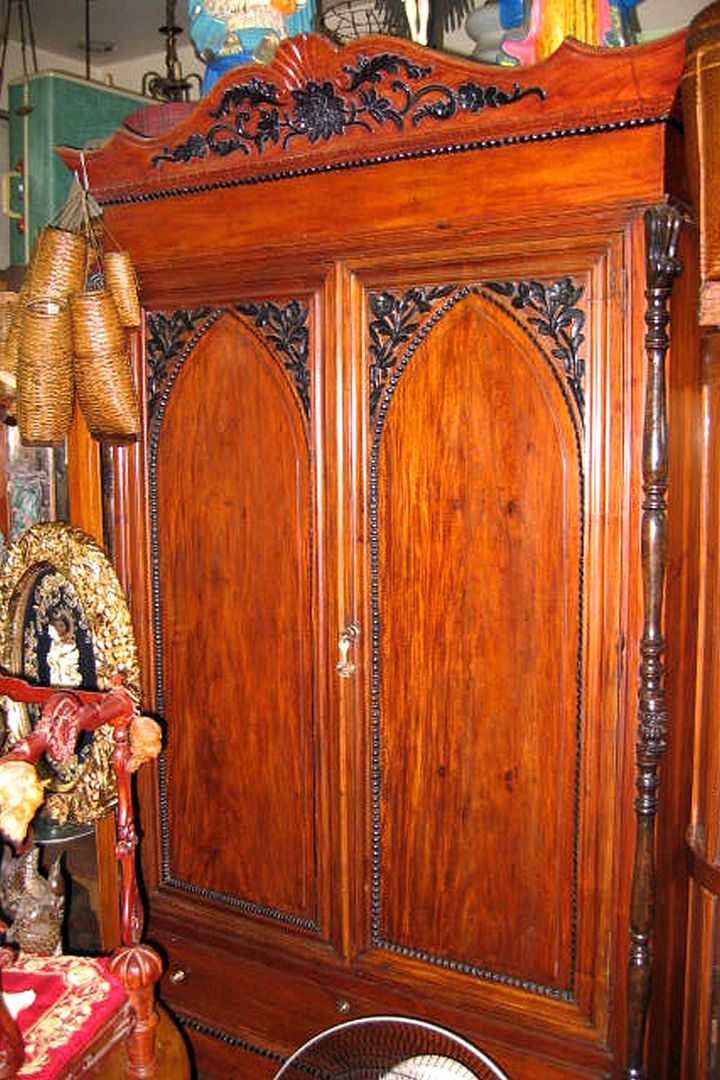




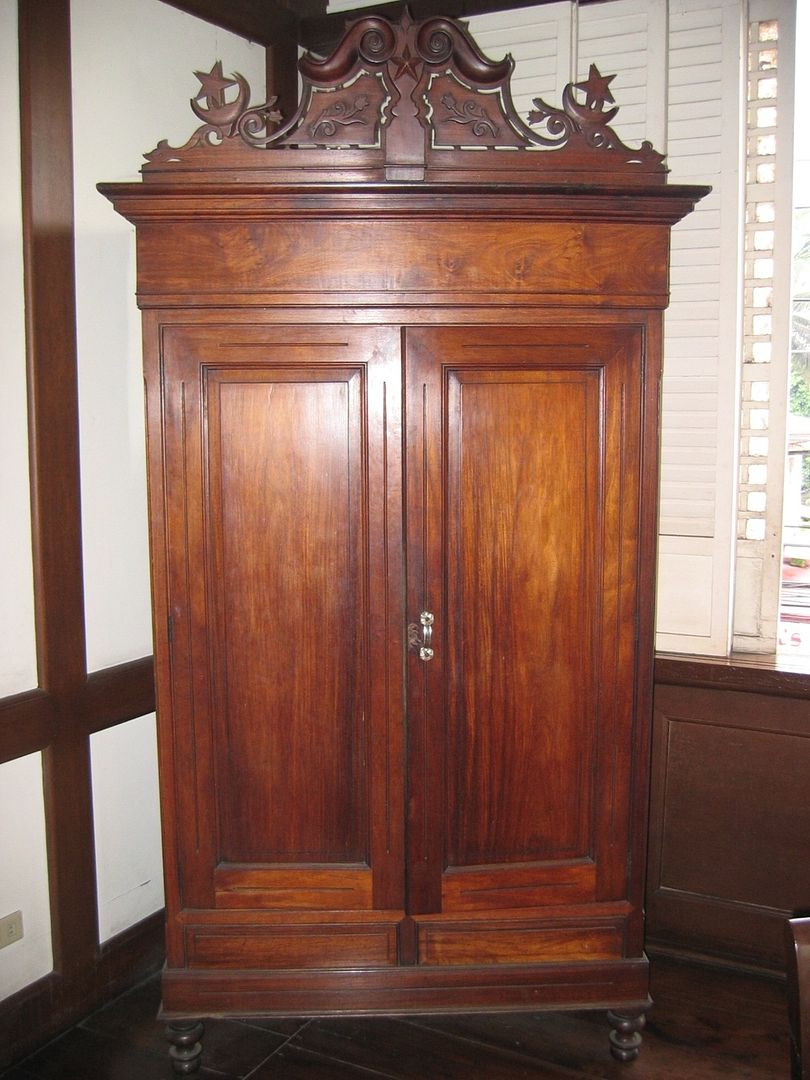
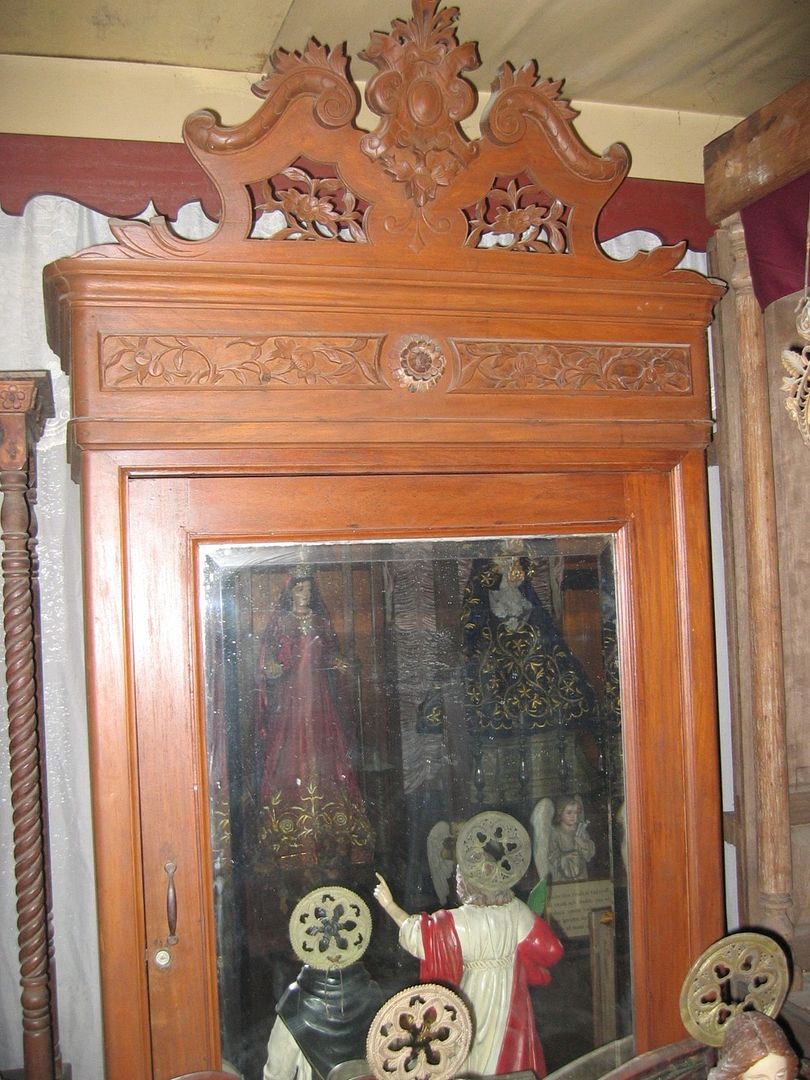
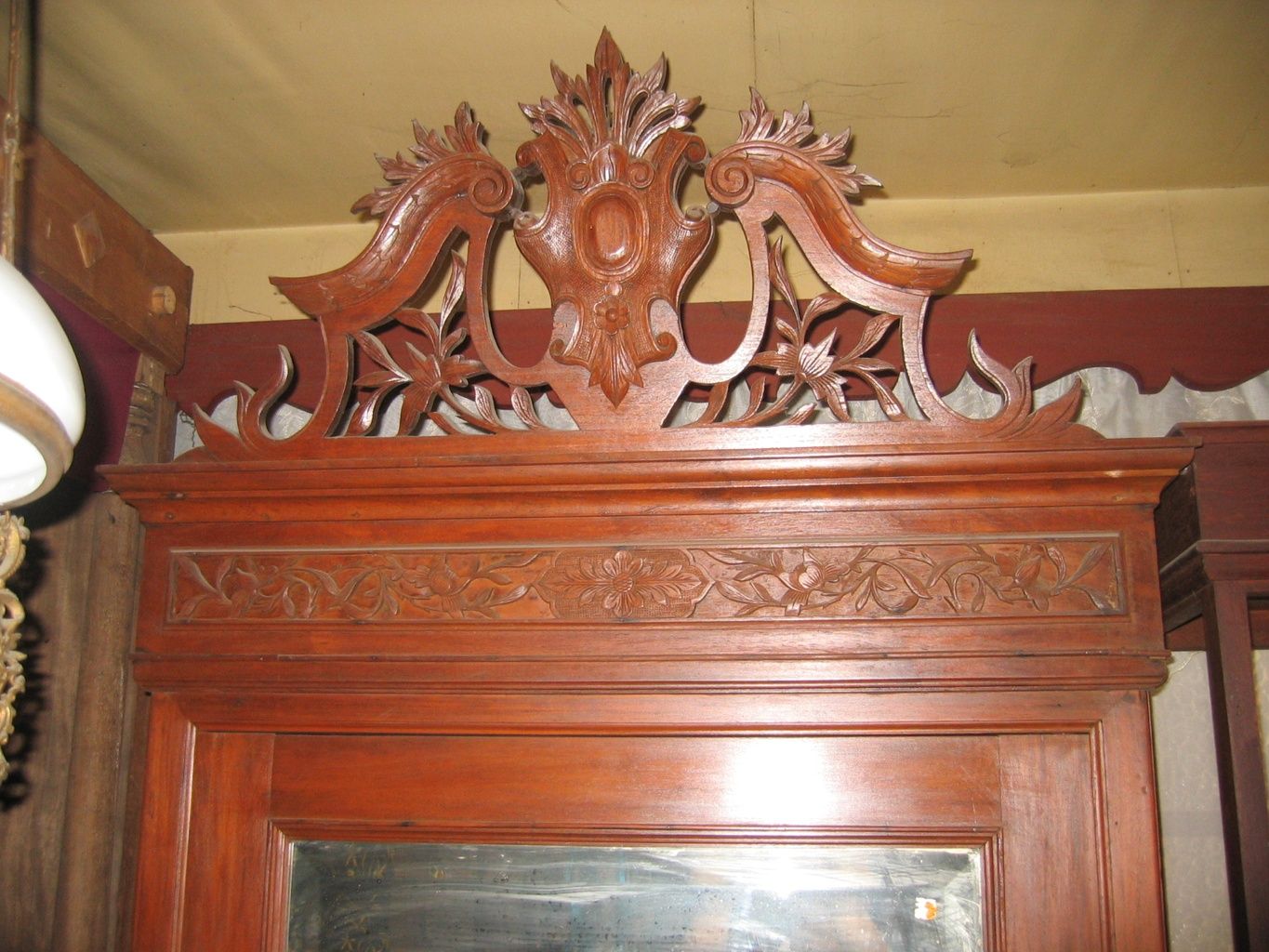

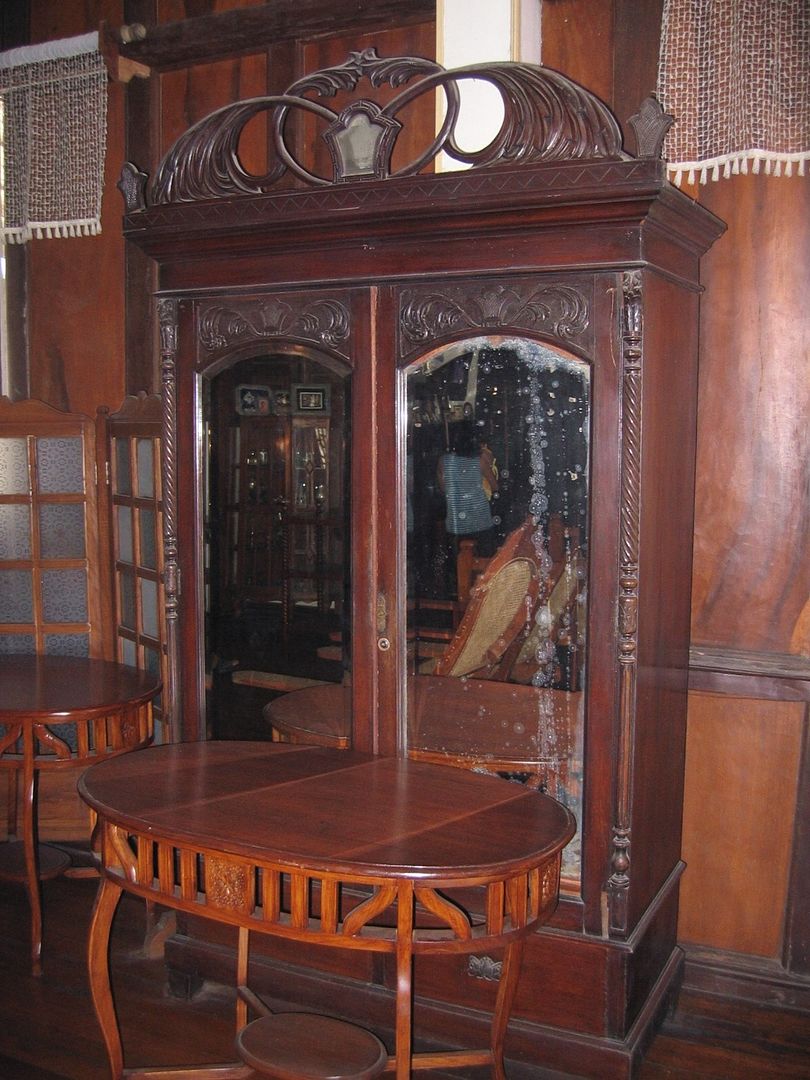
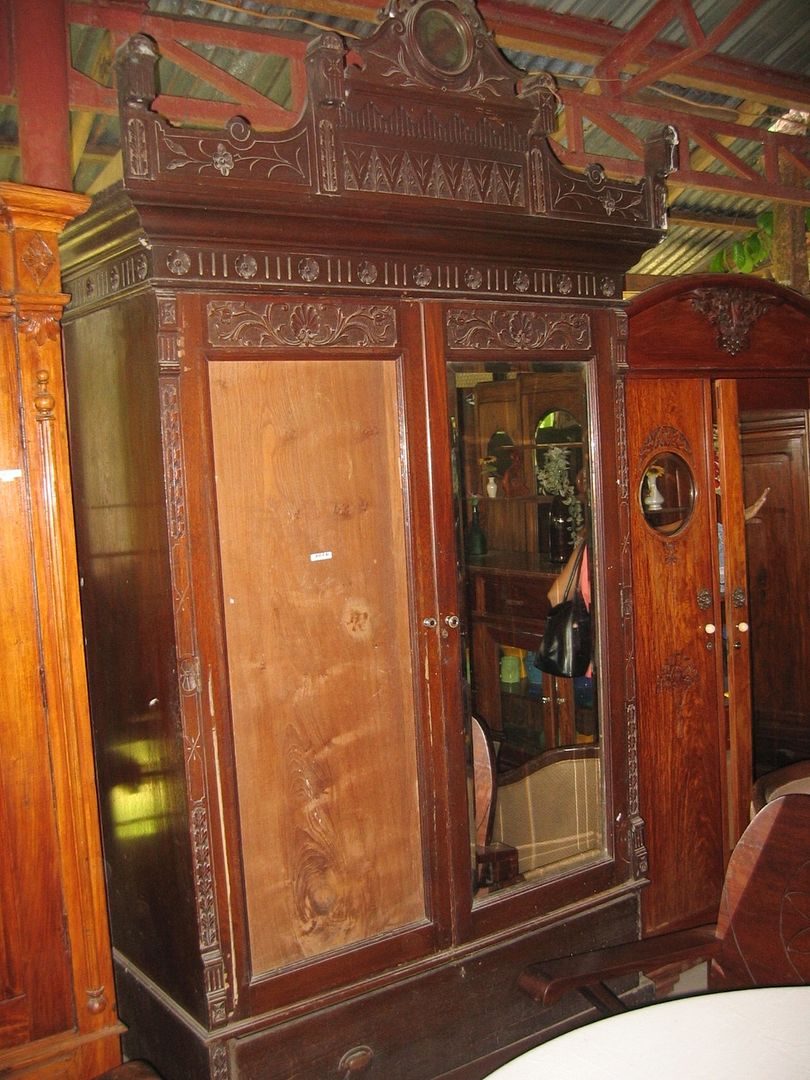
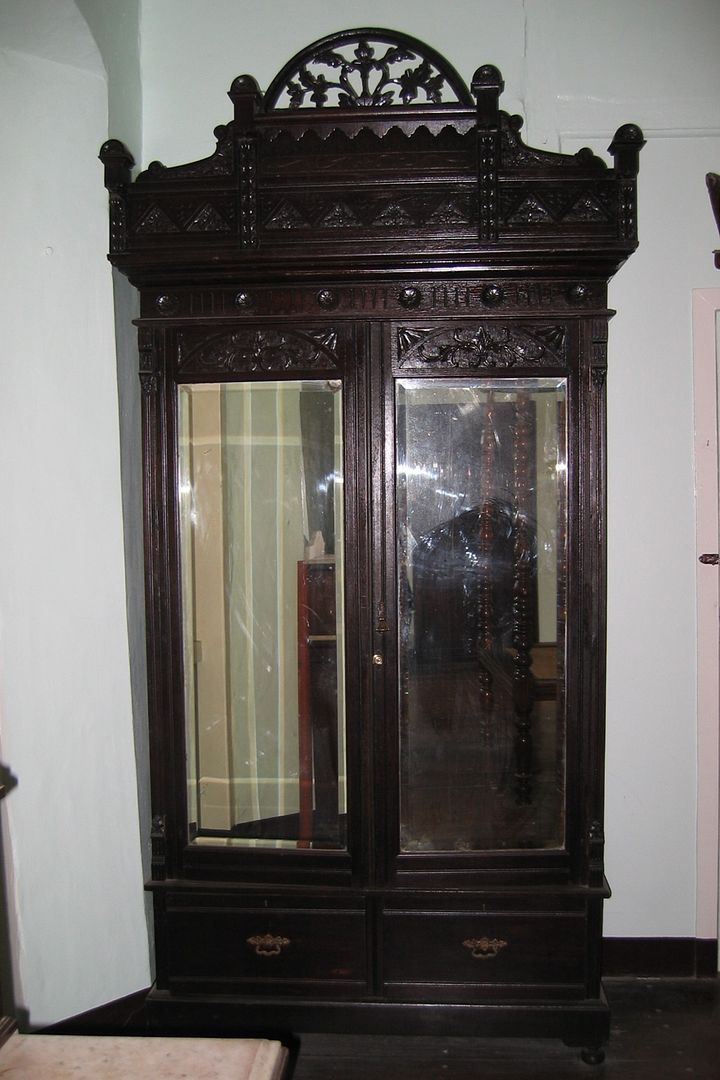
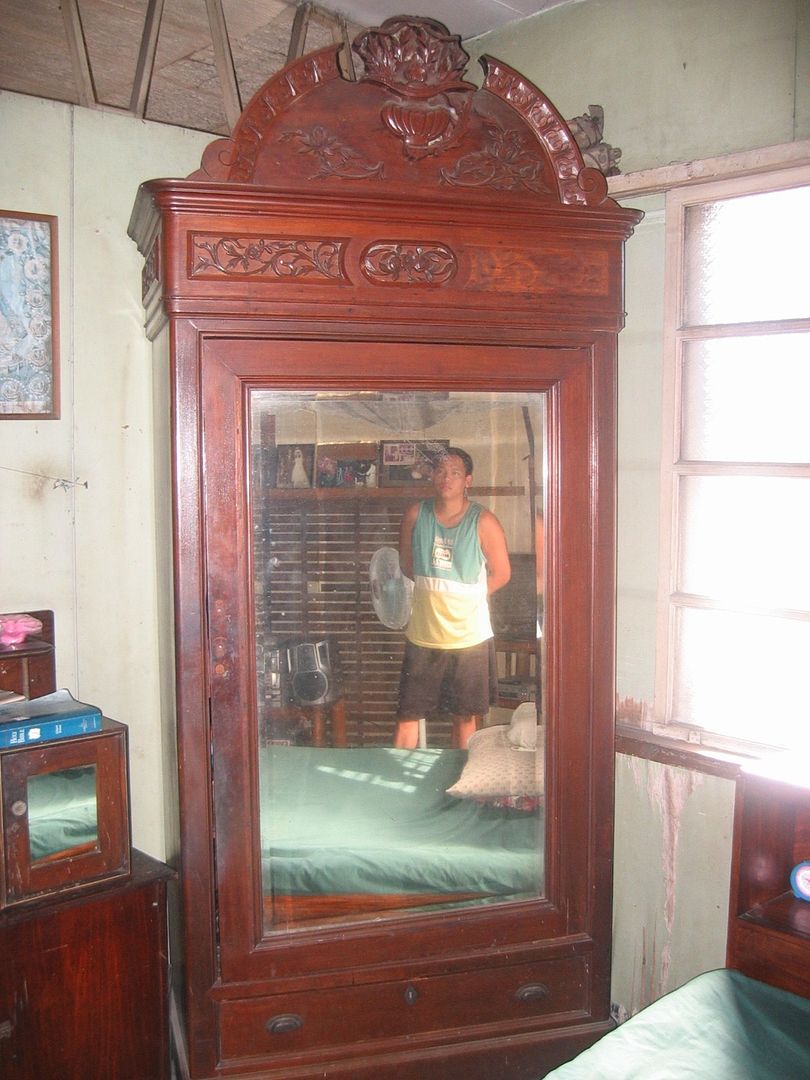


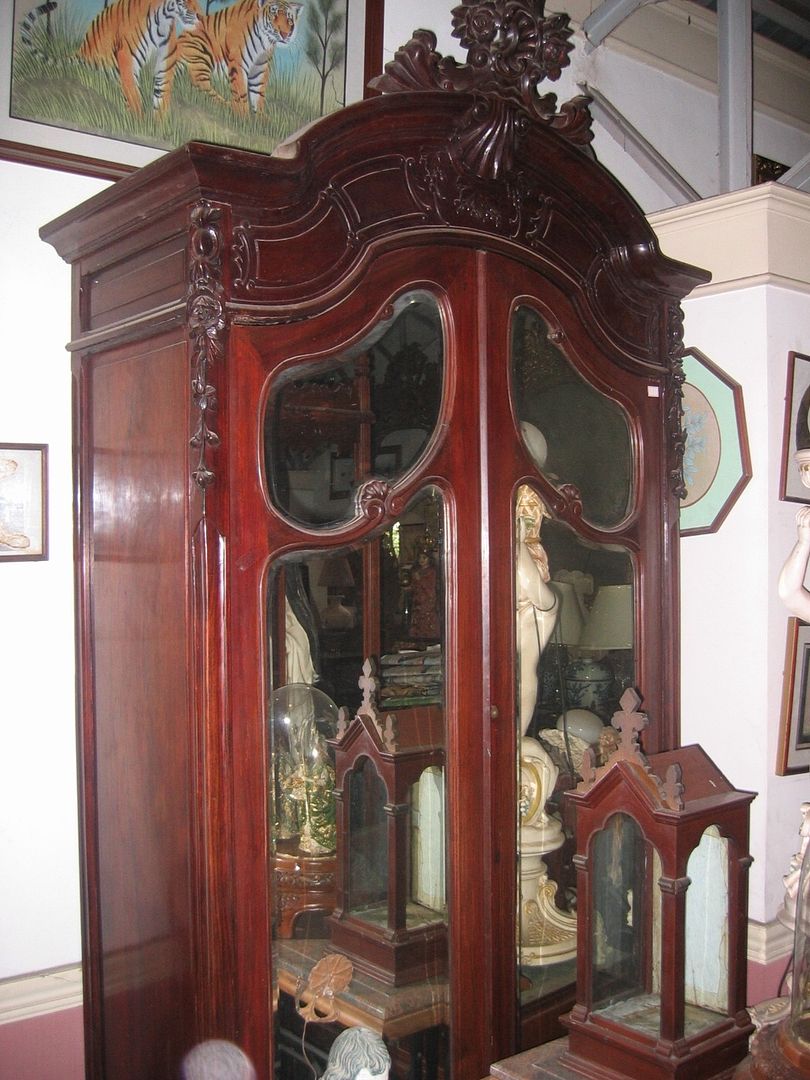

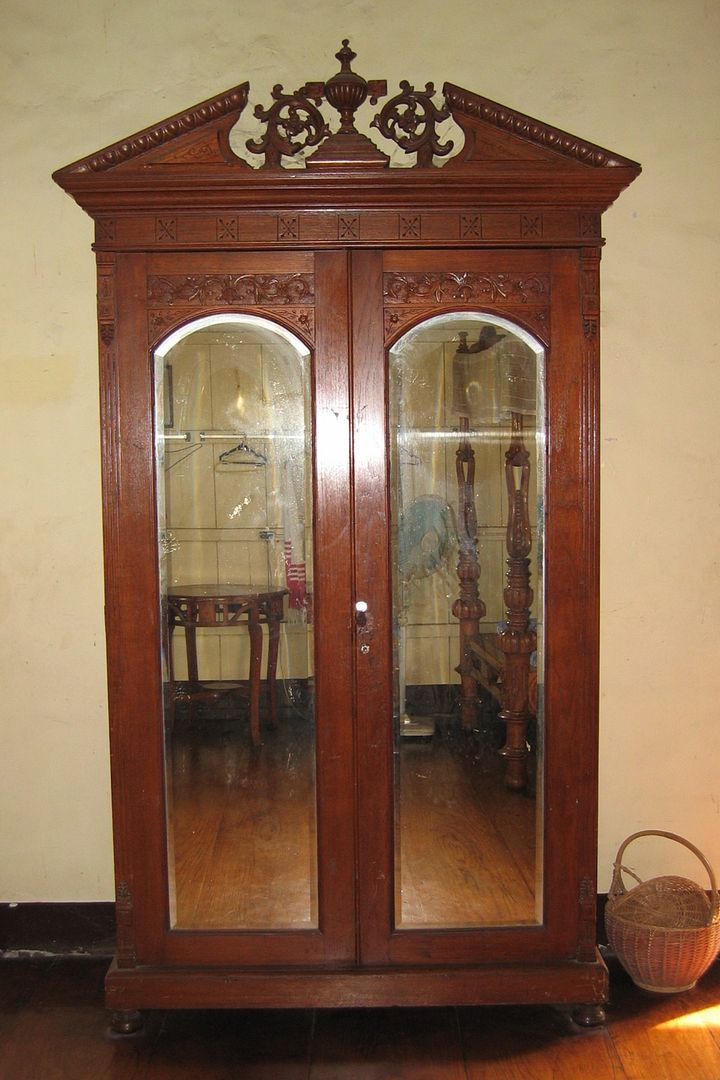

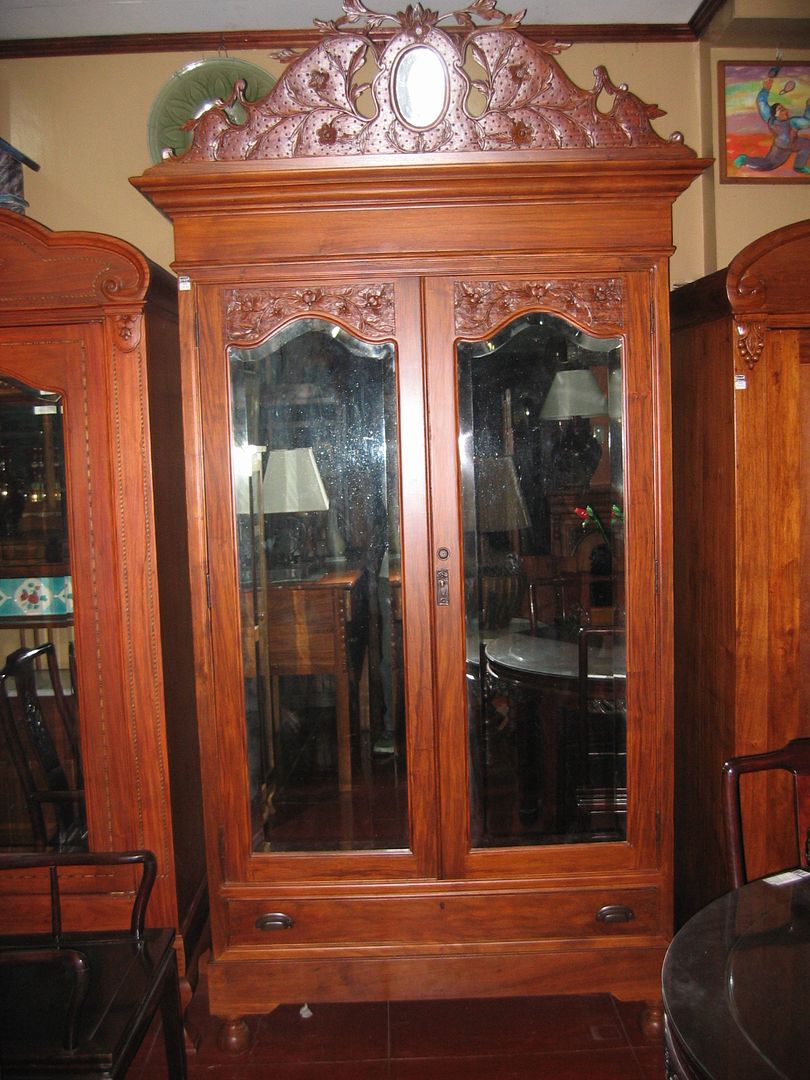
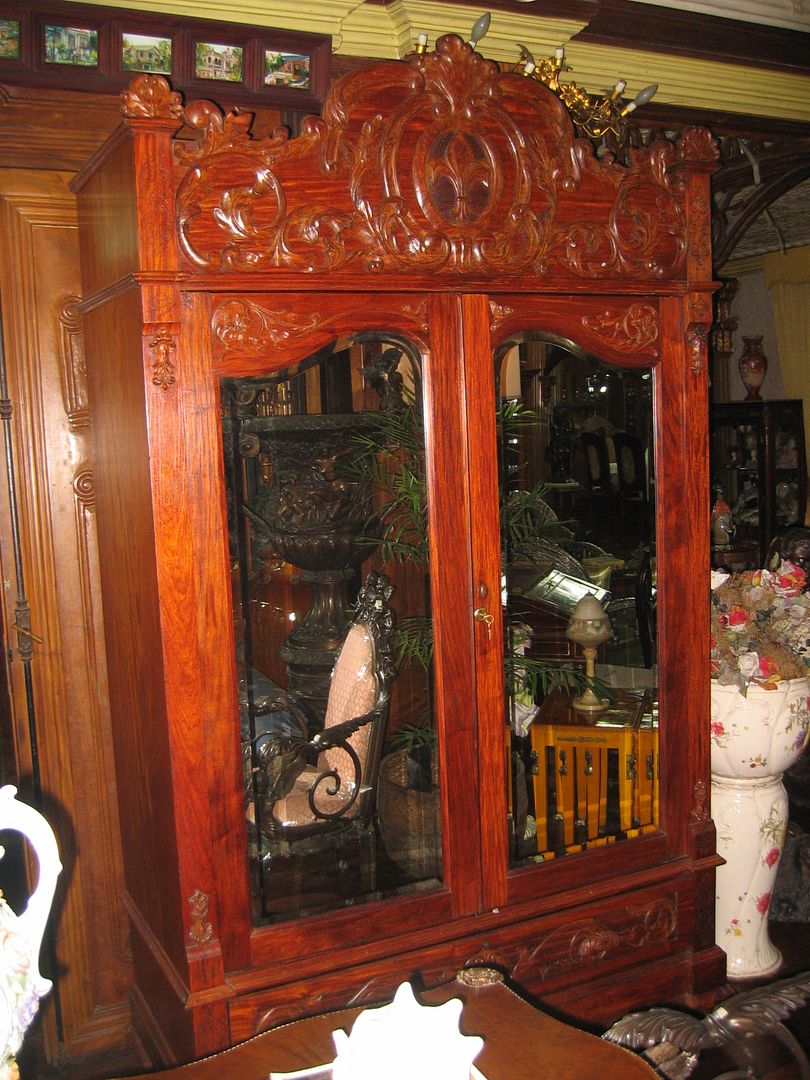
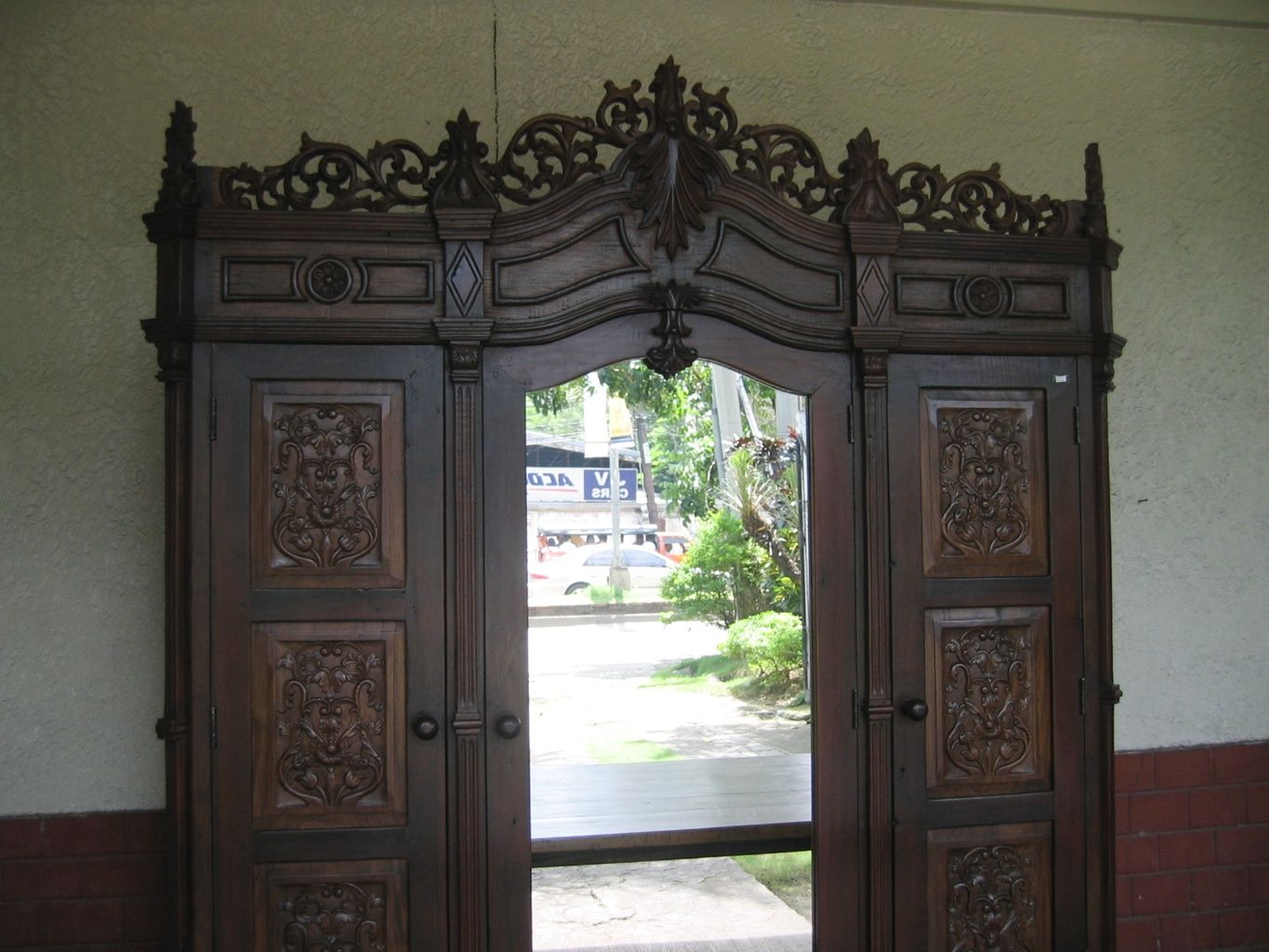
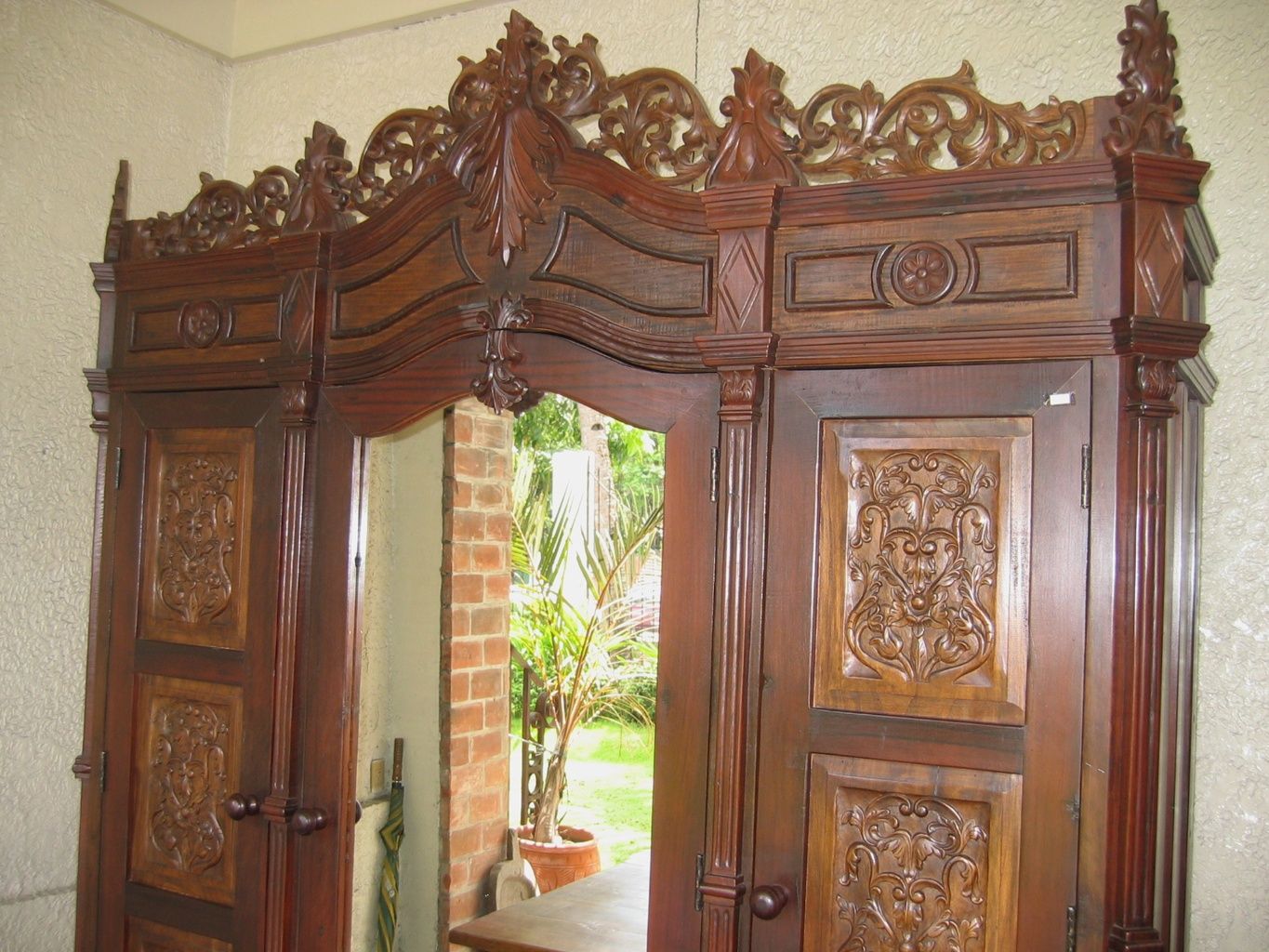
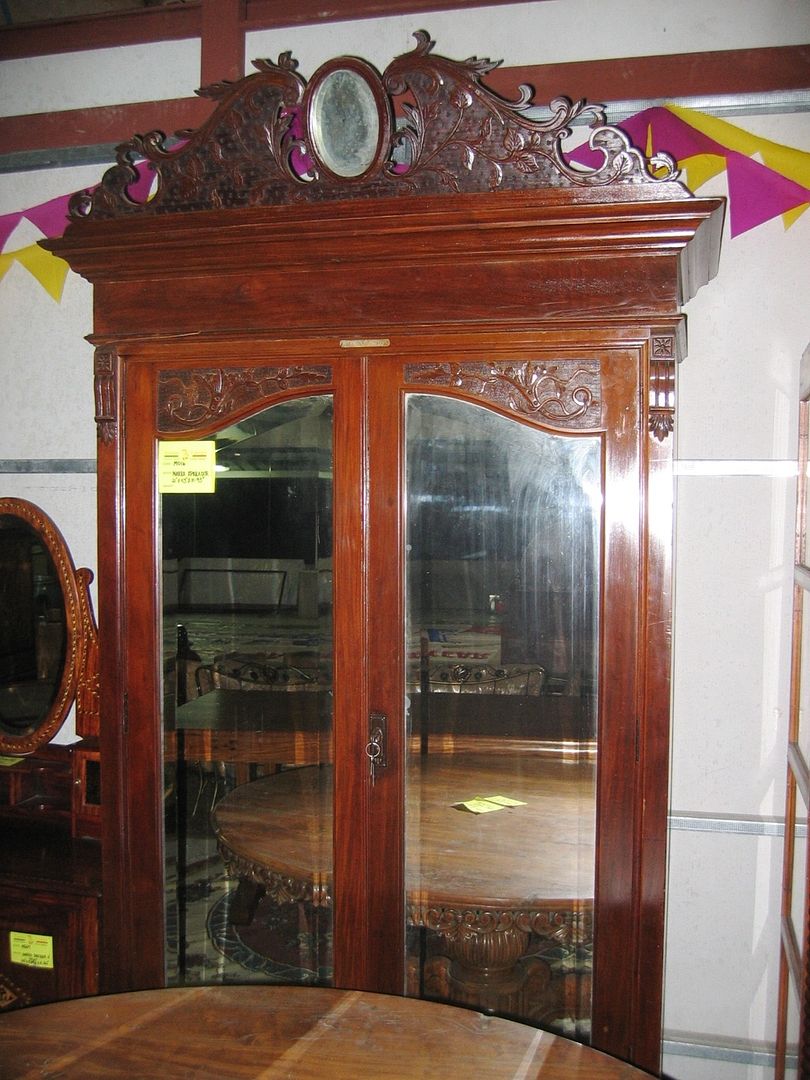
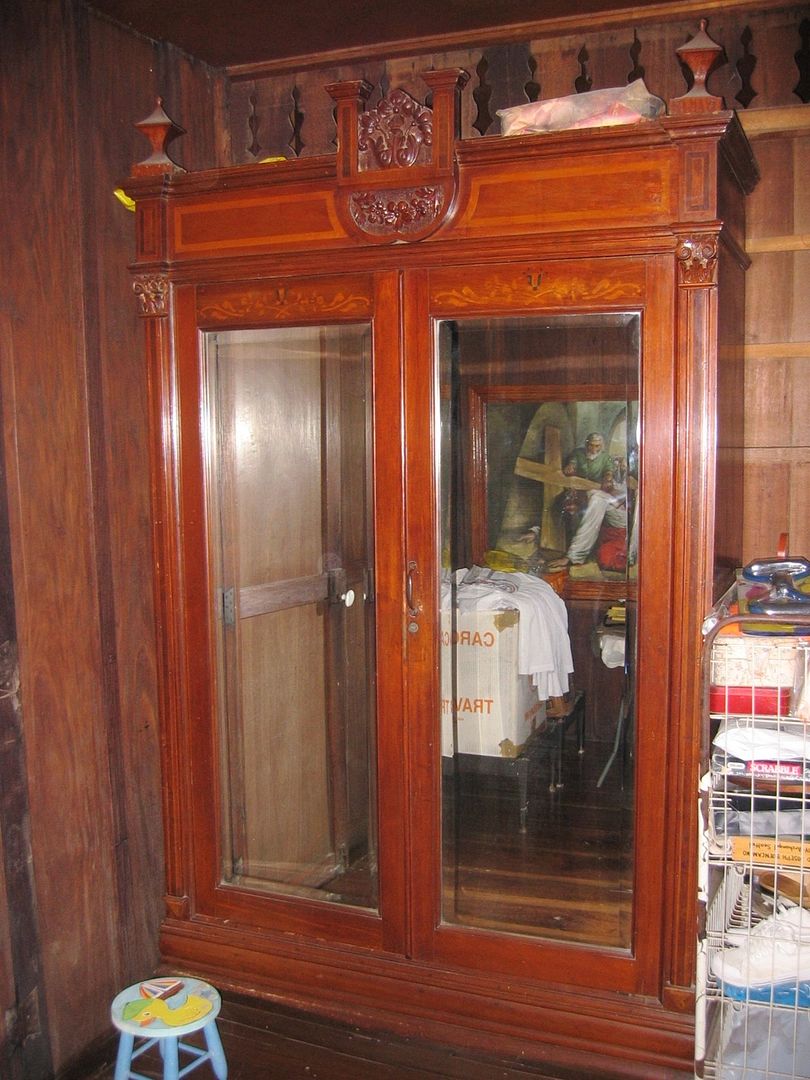
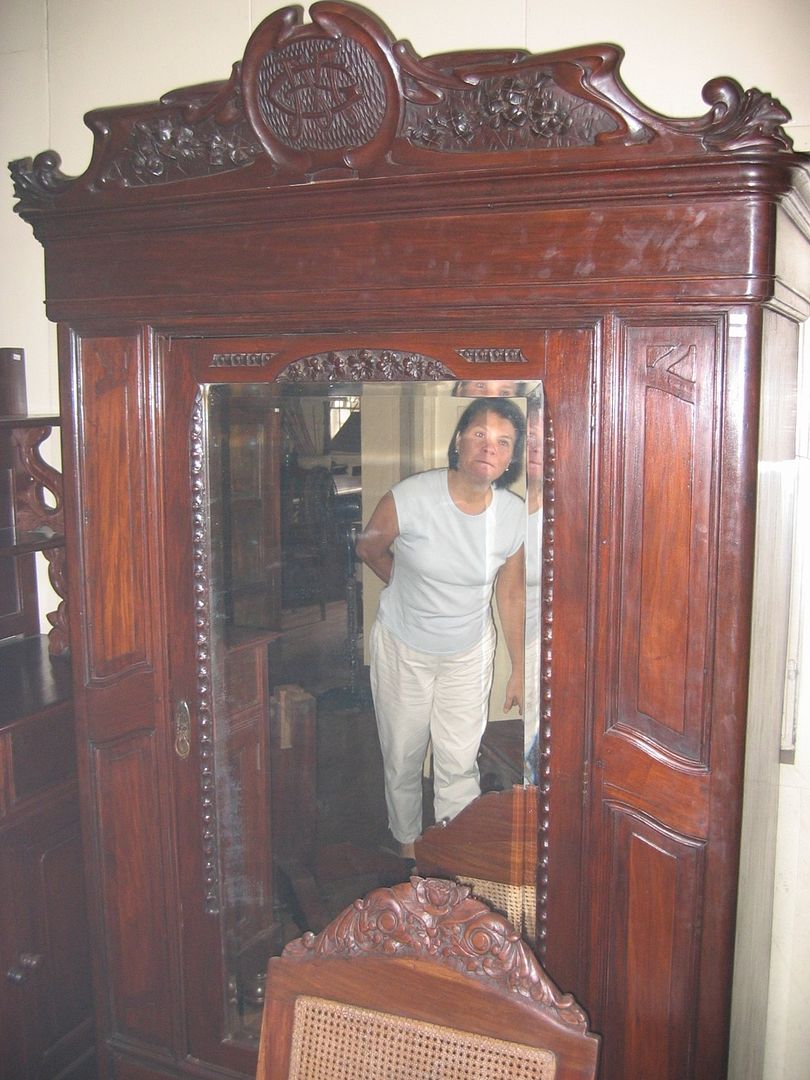
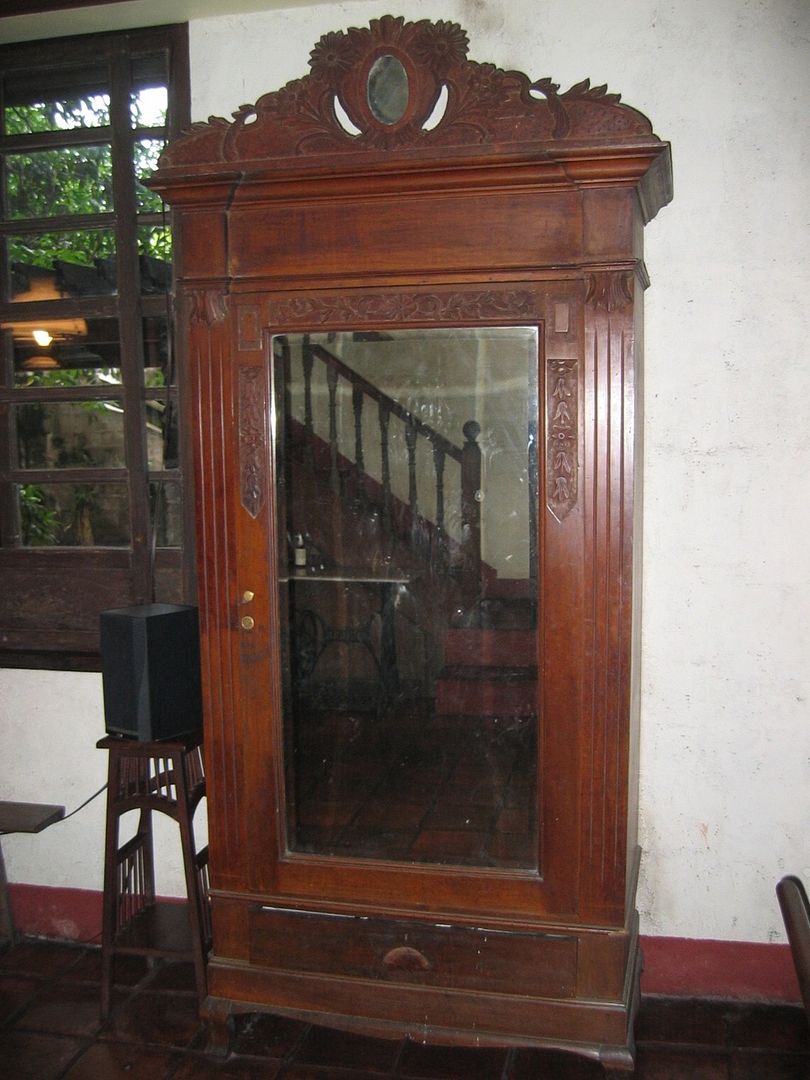
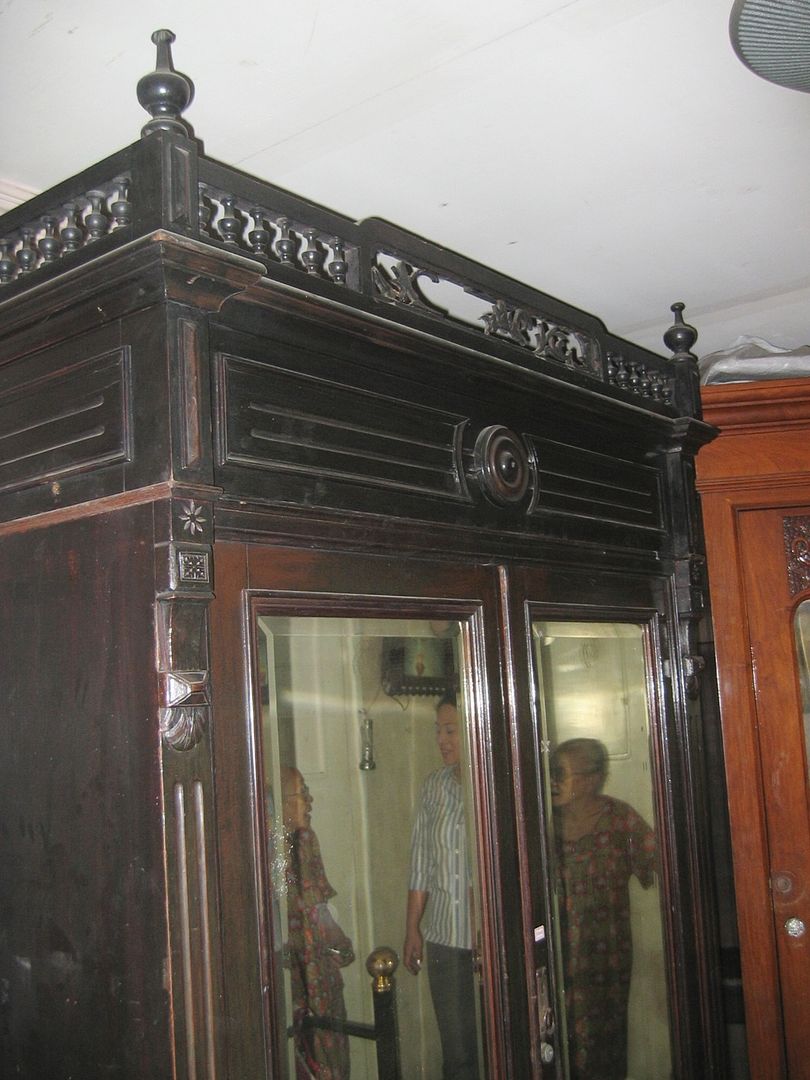
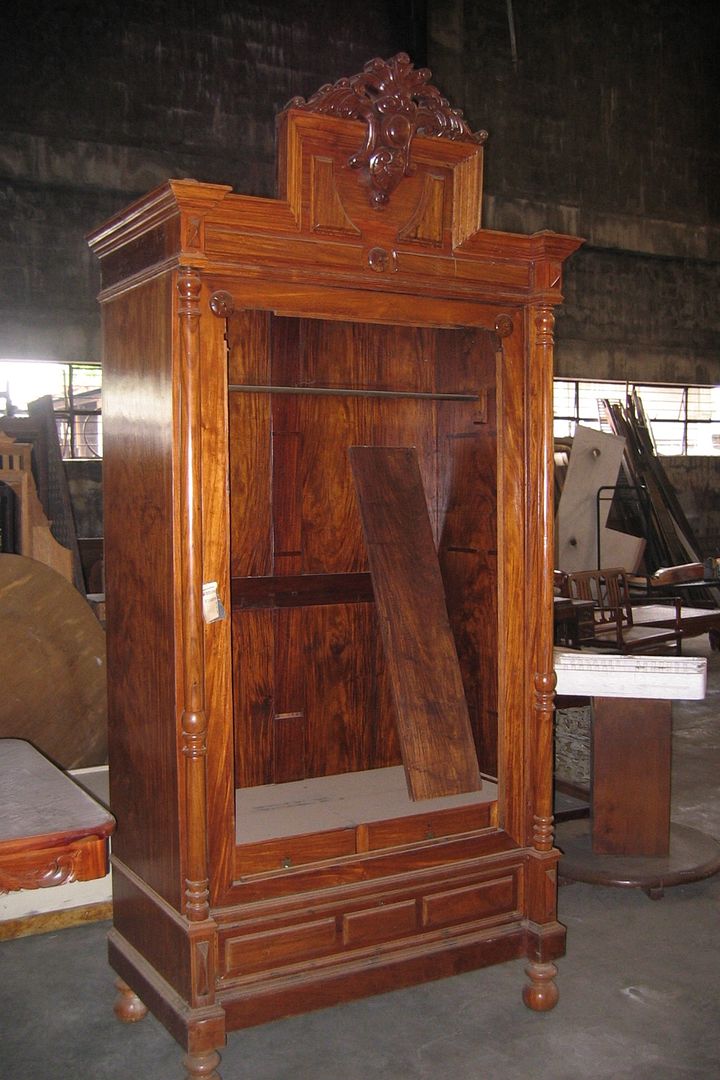
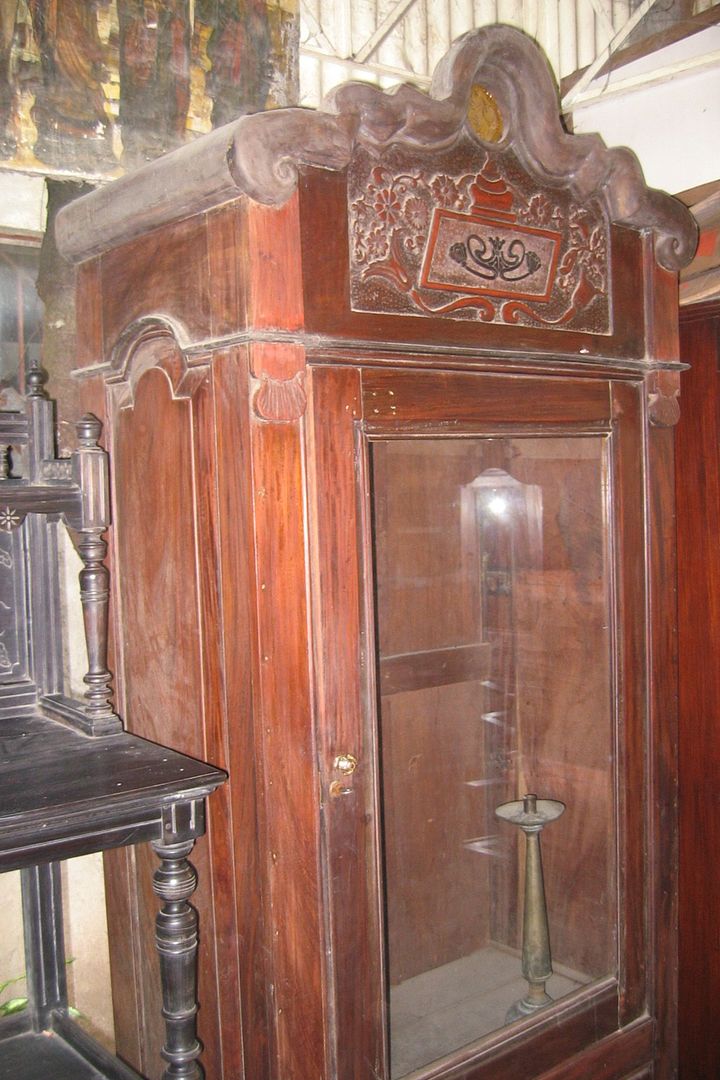
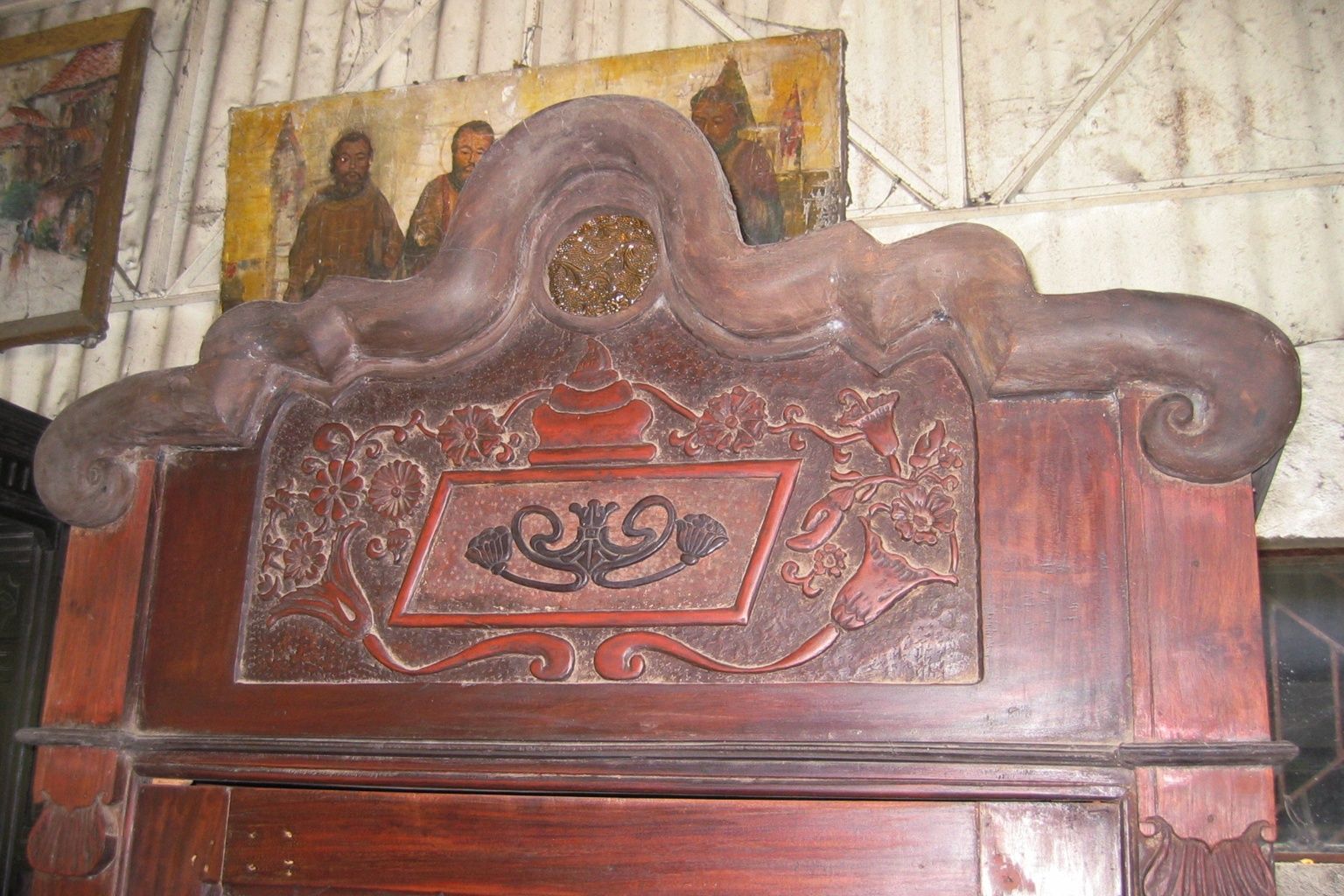
1 comment:
It's Beautiful Antiques Furniture
Post a Comment